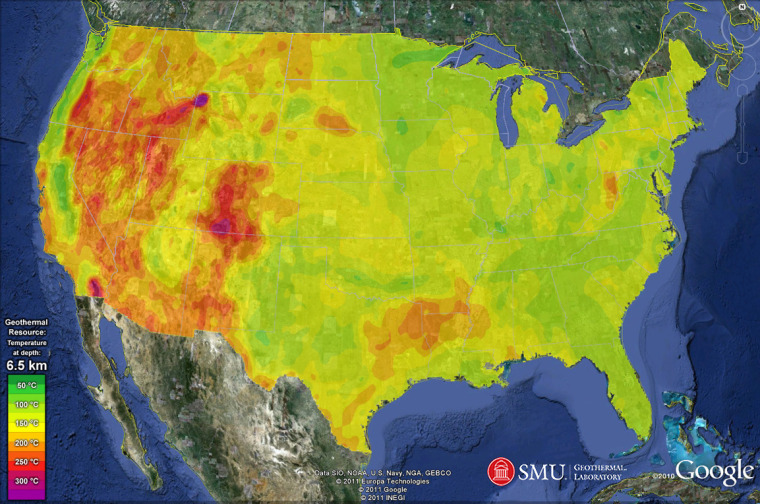Clean, accessible, reliable and renewable energy equivalent to 10 times the installed capacity of coal power plants in the U.S. is available from the hot rocks under our feet, according to the results of a new mapping study.
The energy, called geothermal, is generated from heat found deep below the Earth's surface. While there's some geothermal developed in the western U.S., it was previously thought lacking in the eastern portion of the country.
Now, researchers at Southern Methodist University, with funding from Google.org, have compiled geological data from 35,000 sites across the U.S. and found that there's massive potential all across the country, including significant portions of the eastern two-thirds of the U.S.
What's more, the energy can be tapped with existing technology, according to the researchers. That's largely due the recent development of drilling techniques that make methods such as enhanced geothermal systems (EGS) possible.
In EGS, a well is drilled several miles into the Earth's crust, water is injected down that well to fracture hot rocks, creating thousands of small pathways for the water to flow and be heated. This hot water and steam is then piped to the surface, where it powers a turbine to generate electricity.
Key to addressing some of the environmental concerns about excess water usage, the used water is recycled back down the well, creating a closed loop, as Google explains in this introductory video below.
Other concerns associated with the technology include the potential to create earthquakes. When the hot rock is broken apart, it induces seismicity — generates earthquakes — that can be felt at the surface. It could also trigger a larger quake.
For a good overview of this risk, read this editorial from Domenico Giardi, director of the Swiss Seismological Service, published in the journal Nature. Earthquakes stopped an EGS project in Basel, Switzerland, in 2009.
A protocol for monitoring and mitigating earthquake problems associated with EGS has been developed, and the new mapping results are compliant with that protocol, according to the SMU researchers.
All of this should help nudge along development of this energy resource, which isn't subject to the fickleness of the weather that hampers wind and solar. And with more than 3 million megawatts of accessible geothermal mapped, the potential seems tempting.
More on geothermal energy:
- Hot rocks, water heat this town
- MIT study: Get more energy from Earth's heat
- Geothermal energy boom? U.S. to open lands
- Energy from hot rocks? What out for quakes
John Roach is a contributing writer for msnbc.com. To learn more about him, check out his website. For more of our Future of Technology series, watch the featured video below.
